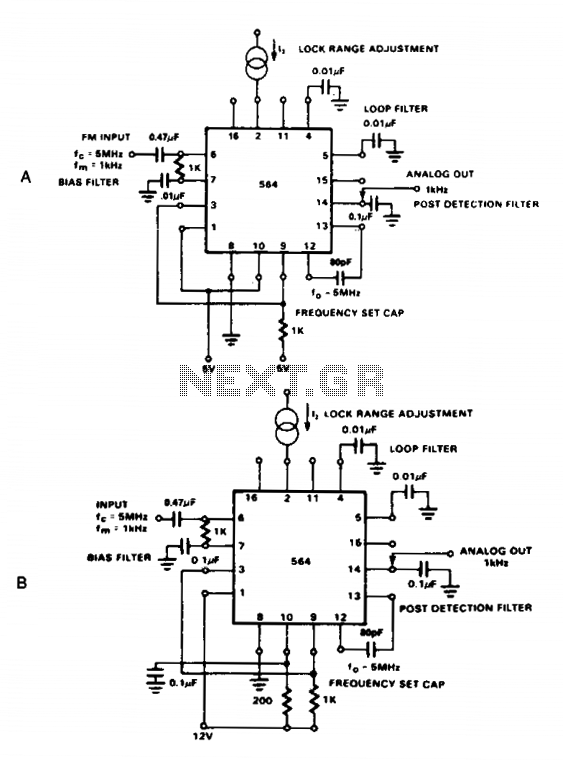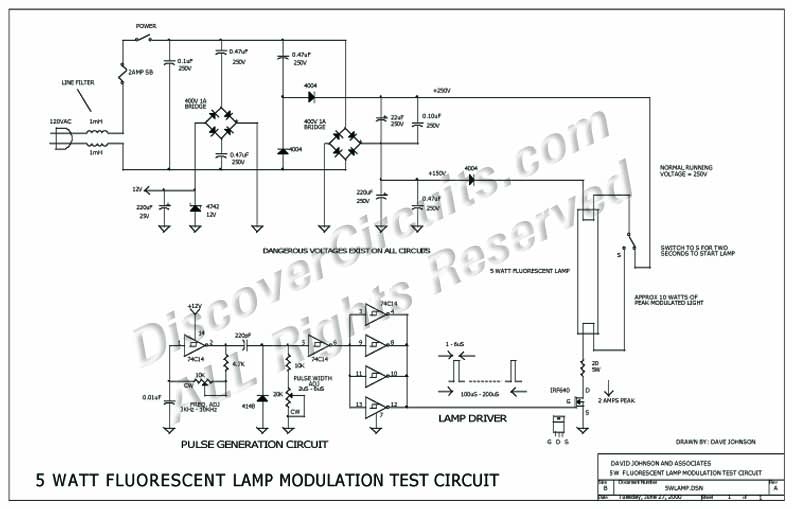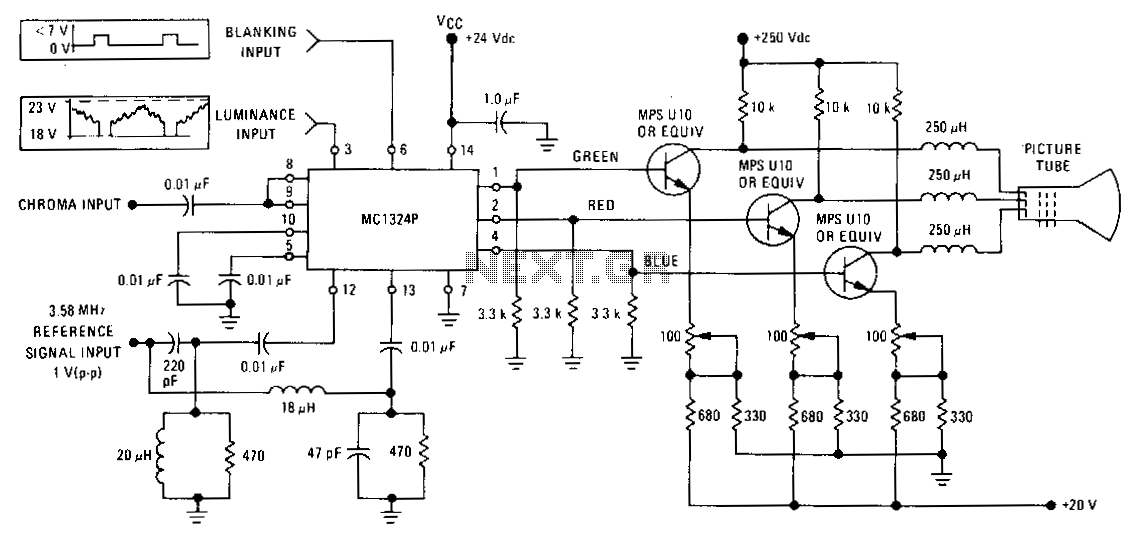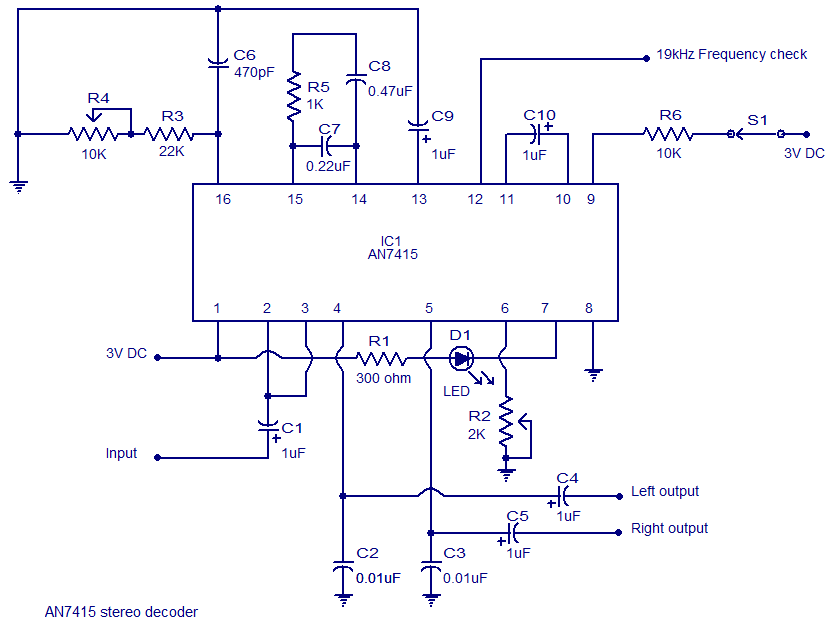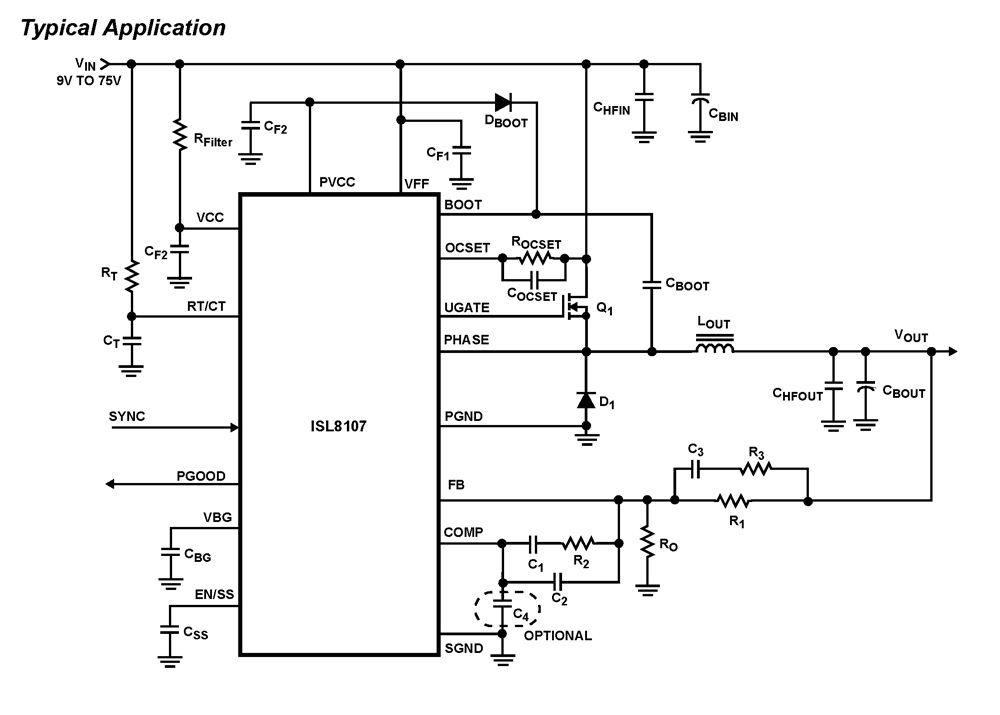
Pulse-width modulator
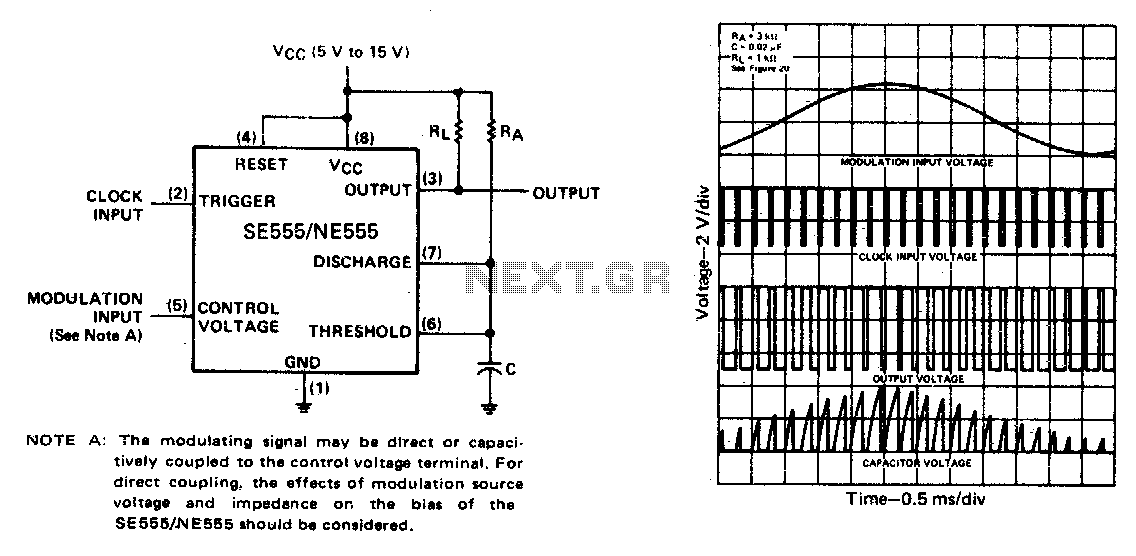
The monostable circuit is activated by a continuous input pulse train, with the threshold voltage being adjusted by a control signal. This results in a modulation of the output pulse width. A sine-wave modulation signal is depicted, although any waveform can be utilized.
The monostable circuit, commonly known as a one-shot multivibrator, is designed to produce a single output pulse in response to a triggering input. In this configuration, the circuit is triggered by a continuous pulse train, which serves as the input signal. The threshold voltage, a critical parameter in determining the output pulse characteristics, is modulated by an external control signal. This modulation allows for dynamic adjustment of the pulse width, which is the duration of the output signal.
The output pulse width can be varied based on the amplitude and frequency of the control signal. The circuit's response to the input pulse train results in a controlled output that can be tailored for various applications, such as timing circuits, signal processing, or pulse width modulation systems. The modulation signal can take various forms; while a sine wave is illustrated as an example, other waveforms, such as square waves or triangular waves, can also be employed depending on the specific requirements of the application.
In practical implementations, the monostable circuit typically consists of components such as resistors, capacitors, and a triggering device (like a transistor or an operational amplifier) that define the timing characteristics. The resistor-capacitor (RC) time constant plays a pivotal role in determining the output pulse width, which is influenced by the control signal. The design must ensure that the circuit is stable and responsive to the input signal while providing the desired modulation effect.
Overall, the versatility of the monostable circuit allows it to be integrated into a wide range of electronic systems, enhancing functionality through precise control of pulse characteristics.The monostable circuit is triggered by a continuous input pulse train and the threshold voltage is modulated by a control signal. The resultant effect is a modulation of the output pulse width, as shown A sine-wave modulation signal is illustrated, but any wave-shape could be used.
The monostable circuit, commonly known as a one-shot multivibrator, is designed to produce a single output pulse in response to a triggering input. In this configuration, the circuit is triggered by a continuous pulse train, which serves as the input signal. The threshold voltage, a critical parameter in determining the output pulse characteristics, is modulated by an external control signal. This modulation allows for dynamic adjustment of the pulse width, which is the duration of the output signal.
The output pulse width can be varied based on the amplitude and frequency of the control signal. The circuit's response to the input pulse train results in a controlled output that can be tailored for various applications, such as timing circuits, signal processing, or pulse width modulation systems. The modulation signal can take various forms; while a sine wave is illustrated as an example, other waveforms, such as square waves or triangular waves, can also be employed depending on the specific requirements of the application.
In practical implementations, the monostable circuit typically consists of components such as resistors, capacitors, and a triggering device (like a transistor or an operational amplifier) that define the timing characteristics. The resistor-capacitor (RC) time constant plays a pivotal role in determining the output pulse width, which is influenced by the control signal. The design must ensure that the circuit is stable and responsive to the input signal while providing the desired modulation effect.
Overall, the versatility of the monostable circuit allows it to be integrated into a wide range of electronic systems, enhancing functionality through precise control of pulse characteristics.The monostable circuit is triggered by a continuous input pulse train and the threshold voltage is modulated by a control signal. The resultant effect is a modulation of the output pulse width, as shown A sine-wave modulation signal is illustrated, but any wave-shape could be used.
